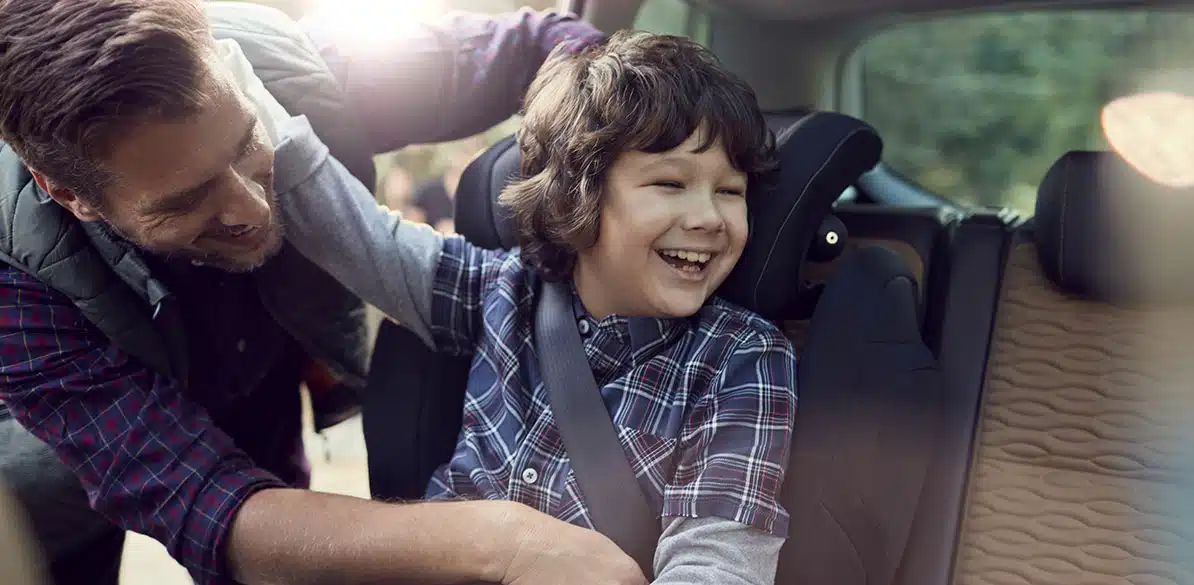Restraint systems when your child reaches 4 years of age
And now what? We answer this question that many parents ask themselves

Road Safety
When a child reaches the age of 4, parents often ask themselves: and now what? This question refers to which type of restraint system is the best, or most suitable from that age onwards. In this article we answer this question.
There are basically two different concepts to choose from. Let’s look at the advantages and disadvantages of each of them to help us make our decision.
If what we are looking for is maximum safety, we should opt for a rear-facing seat, so we should look for a product on the market that allows the child to travel in a rear-facing position up to a height of 125 cm. This is undoubtedly the safest configuration, but it is also true that it may involve some inconveniences and incompatibilities.
As rear-facing seats for children up to 125 cm need more space to accommodate the child, they take up more room inside the vehicle and, depending on the type of car, may be incompatible with a medium-sized passenger in the front seat.
It is also likely that the child will want to look forward at this age, and this kind of seat will make it less comfortable (although this depends on the child’s growth). Despite these disadvantages, it is still the safest option.
On the other hand, we have booster seats with backrests. With these products, the restraint system is the car’s safety belt. The child seat creates the conditions for correct seat belt restraint by increasing the height of the pelvis to avoid belt pressure on non-rigid parts and by correctly guiding the seat belt to shoulder height to help restrain the child. Boosters with backrests from the age of 4 years onwards are also considered a safe way to travel, since the child’s body is already much more developed and the weight of the head has been reduced with respect to the rest of the body, but it is also true that this is a less safe way to travel than in the rear-facing position.
The advantages of these systems include the convenience of their use up to 150 cm in height and their ability to adapt to the size of the growing child.
As an expert in child safety said, “The perfect seat does exist, and it is the one that best adapts to the circumstances of each parent and each child.”
For this reason, to choose which child seat concept best suits our needs, we simply have to put all the factors into the equation: the car, the child, the type of journey, usability, safety, economy and any other variable that is important in the final decision.
